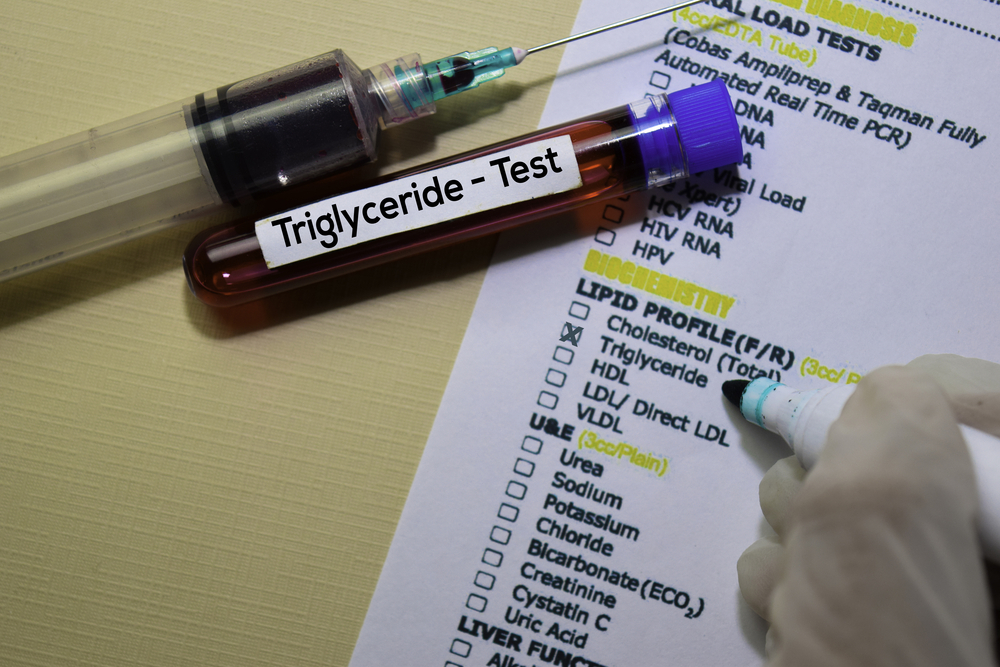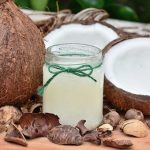Triglycerides are a type of fat found in your blood. Calories your body doesn’t use are converted into triglycerides. Triglycerides are stored in your fat cells. When your body needs energy between meals your body releases triglycerides. About 25.9% of adults in the United States have high levels.
- Normal range of triglycerides are less an 150.
- Borderline high are 150-199.
- High levels are 200-499.
- Very high levels are 500 and above.
You can check your triglyceride levels with a blood draw either called a lipid panel or lipid profile. Triglycerides are different from your cholesterol. Triglycerides store unused calories and provide your body with energy while cholesterol is used to build cells and hormones.
Causes Of High Triglycerides
High triglycerides can be caused by a number of different things. It can be a side effect of certain medications you could be taking such as diuretics, estrogen and progestin, retinoids, steroids, beta blockers, some immunosuppressants, and some HIV medications.
High triglycerides coincide with obesity and metabolic syndrome.
Having high triglycerides can contribute to artery hardening. This can put you at a higher risk of stroke, heart attack, and heart disease.
Having higher triglycerides can also increase your risk of insulin resistance, obesity, pancreatitis, type 2 diabetes, and cardiovascular disease.
Lowering Your Triglycerides
There are some things you can do to lower your triglycerides. One of the main ones is to aim for a healthy weight for yourself. Even losing 5% of body weight can lower your levels and help you sustain lower levels. Cutting extra calories, eating a calorie deficit diet can help lower your triglycerides too.
Another thing to do is exercising regularly. Shooting for at least 30 minutes a day, 5 days a week has shown vast improvement in people with high levels of triglycerides. HIIT workouts seem to help lower your levels faster than other forms of exercise.
Diet plays a big part in your triglyceride levels. Avoiding added sugars in sweets, soft drinks and fruit juices can help. Limiting all sugars can lower levels. Limit your candy, sweetened drinks, cookies, and pastries.
A low carbohydrate diet can also help. Carbohydrates such as white bread, rice and pasta all increase your triglycerides. Avoid foods that have the first ingredient listed with the word “bleached.” Instead chose high grain foods, such as whole-wheat pasta, brown rice, and whole-grain bread.
Adding fiber into your diet can also help. Fiber helps you feel fuller for longer. It also slows the absorption of fat and sugar in your small intestines. Fiber can contain complex carbohydrates. You can get fiber from whole grains, fruits and vegetables.
You will want to avoid trans fats. These are fats that are added to most processed foods. Cutting down on processed foods and sticking to more “real” foods can help lower your triglyceride levels.
You will also want to choose healthy fats over saturated fats. Healthy fats include olive oil, nuts, seeds, and fish.
Foods that can help you lower your triglycerides are sardines, salmon, leafy greens, green beans, butternut squash, citrus fruits, berries, low or fat free dairy products such as cheese, yogurt milk, quinoa, barley, brown rice, beans, nuts, and seeds.
Diets that have shown to be helpful are low carb diets, high fiber diets, vegetarian diets, or an oily fish diet. An example of meal choices for a diet to lower triglycerides could be, breakfast oatmeal with berries, lunch tuna sandwich on whole-grain bread and a garden salad and dinner chicken and vegetable stir fry with brown rice. If you need a snack you can make a fruit smoothie with Greek yogurt added in. Other snack ideas could be sliced up fruit, almonds, walnuts, or sliced up vegetables.
Conclusion
Dietary and lifestyle factors can play a huge role in your triglyceride levels. Changing things in both can help lower your levels, which in return lower your risk of heart diseases, type 2 diabetes, insulin resistance, and metabolic syndrome. Adding high fiber and healthy fat foods in your diet can be helpful as well as limiting or avoiding carbohydrates, added sugars and trans fats.
Need more fiber? Purium’s Daily Fiber Blend actually burns fat!
Some simple diet and lifestyle changes can help to lower your triglyceride numbers? Learn more! #HealthSurgeon
Sources:
https://www.webmd.com/cholesterol-management/ss/slideshow-triglycerides-tips
https://www.mayoclinic.org/diseases-conditions/high-blood-cholesterol/in-depth/triglycerides/art-20048186
https://www.healthline.com/nutrition/13-ways-to-lower-triglycerides#bottom-line
https://www.everydayhealth.com/heart-health-pictures/why-triglyceride-levels-matter.aspx
https://www.medicalnewstoday.com/articles/7-day-meal-plan-to-lower-triglycerides#7-day-meal-plan









